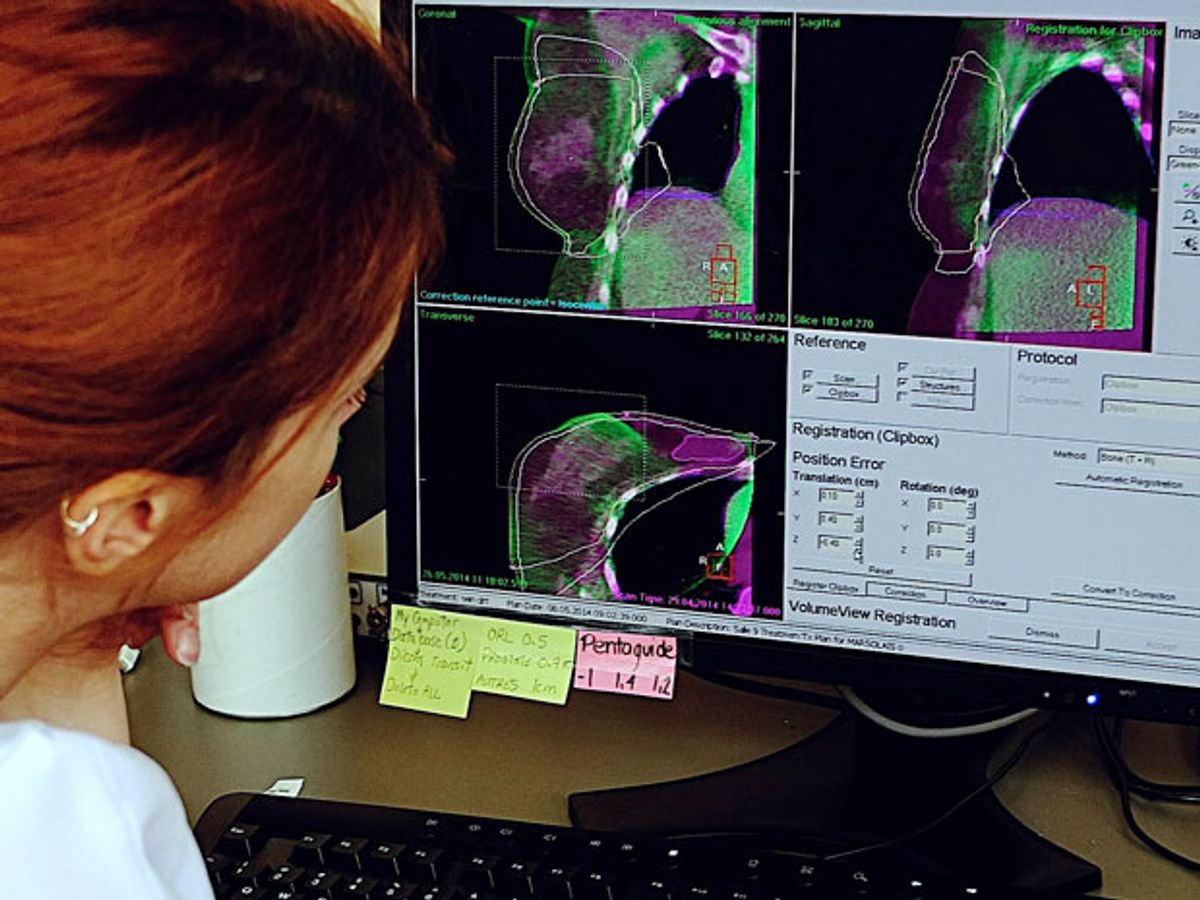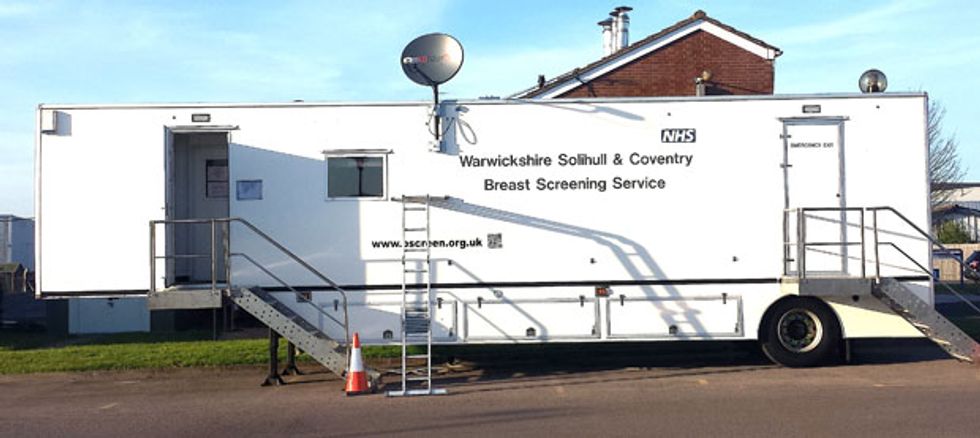In the United Kingdom, a fleet of vans patrol rural areas of the nation daily, providing breast cancer screenings for residents. These screenings are a boon to residents in far-flung areas, who may have a hard time accessing care otherwise, especially for procedures like cancer screenings, which can seem less than urgent much of the time.
Now, the nearly 30-year-old service is getting an upgrade to its data delivery system, using satellites to transmit patient data to hospitals from the remote areas where it is often gathered. The dedicated satellite links could help speed up diagnoses and let vans return to hospitals less frequently, allowing them to serve more patients each day.
Up until now, images and patient data collected by the vans were downloaded to portable hard drives, which were then delivered to local hospitals. In recent months, the 12 of the country's 180 screening vans were equipped with satellite links and software that let them send X-ray images and data from the field directly to the hospital for diagnosis.
The Mercury software, designed by Redfoot Technologies as part of the European Space Agency's Integrated Applications program, is meant to be secure, fast, and user-friendly. Each image taken in the van is first encoded with a date and location signature, then digitally packaged alongside patient information. That package is then encrypted and password protected, and transmitted to a hospital via Avanti Communications Hylas-1 satellite. Vans using the system are equipped with a self-pointing antenna that keep constant contact with Hylas-1, transmitting information to it along the Ka band.
The medical professionals who staff the screening vans can set the system to either broadcast continuously throughout the day, or in a large batch at the end of the day. Either way, software at the hospital sorts the image overnight, preparing them for the discerning eye of staff radiologists the next morning.
The satellite links also offer the screening vans access to the hospital intranet in the field. That means the vans can access existing patient data more easily and input charts for new patients and walk-ins more seamlessly, helping staff do less paperwork and more health screenings in the course of their day. Appointments can be scheduled or rescheduled remotely, a task that used to be challenging, in remote areas there traditional cellular or Wi-Fi service isn't always available.
And with the UK's health care system poised to extend screenings to all women over 70 in the near future, the enhanced efficiency and smoother workflows should help absorb some of the increased workload about to be placed on doctors and nurses in the mobile screening units.




